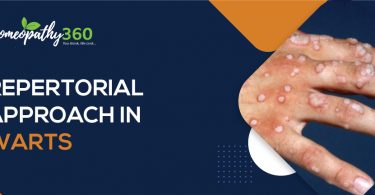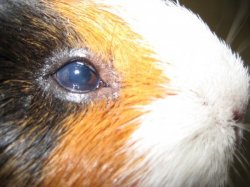
The journey of homeopathy is often summarized in textbooks with a simplified narrative: Dr. Samuel Hahnemann, while translating a text, ingested Peruvian bark (Cinchona) and experienced symptoms of intermittent fever, leading him to formulate the principle of ‘similia similibus curentur’—like cures like.
However, this narrative, though widely accepted, overlooks the deeper and more intricate series of events that led to his revolutionary discovery.
A careful examination of Dr. Constantin Hering’s 1833 speech before the Hahnemannian Society in Philadelphia reveals overlooked details that shed new light on what can only be described as the lost chapter of homeopathic history.
Hahnemann did not simply stumble upon the law of similars by translating Cullen’s Materia Medica. Before that moment, he had already reached a difficult crossroads in his medical career.
Disillusioned by the uncertainties and contradictions in contemporary medical practice, he chose to abandon it altogether. This was not a rash decision but an act of deep conscience.
The helplessness he felt watching his own children suffer from illness only reinforced his conviction that medicine, in its current state, lacked a solid foundation. He sought certainty, not mere tradition or speculation.
“But, said Hahnemann, I had several children, and when from time to time they were visited by serious sickness, I was forced to witness their sufferings without possessing the ability, with certainty, of administering to their relief. As it had been a matter of conscience with him to relinquish the practice of medicine, because of its uncertainty—was it a duty less imperative, that he should strive to attain to certainty?”
This determination set the stage for his future investigations.
The case of Peruvian bark was not an isolated event but part of a much larger inquiry into the fundamental nature of medicinal action.
The fact that Peruvian bark could induce fever-like symptoms in healthy individuals was already known among physicians.
The real question Hahnemann sought to answer was not whether it could produce symptoms but what kind of symptoms it produced and how they related to specific fevers it was known to cure.
“Peruvian bark had already for a long time been recognised as a specific remedy in Intermittent Fevers, and a discussion long existed among physicians why and how it properly affected the cure, a subject, however, upon which they were by no means unanimous. Hahnemann’s enquiries were mainly directed to ascertain, in what species of intermittent fever it was peculiarly salutary; for he had clearly perceived that while it had been effectual in some cases, in others it completely failed; nay, not unfrequently, in spite of every precaution, it had been more prejudicial to the patient than the fever itself.”
Recognizing that experience alone could determine the truth, he did not stop at his personal experiment with Peruvian bark. Instead, he initiated a series of systematic trials, involving not only himself but also other healthy individuals.
These controlled experiments confirmed that the bark consistently produced a set of symptoms in the healthy, which were strikingly similar to the conditions it could cure in the sick.
“Upon this subject experience alone could decide, and for its elucidation a series of experiments were instituted; when behold! experiments both on himself and on other healthy persons taught Hahnemann incontestably, that bark effected peculiar changes in the animal economy of man in health; and when he collected, from the cases of different persons, all the symptoms which he had cured with this remedy, he perceived further, that in all the cases wherein the patients had been really cured with the bark, such patient had had symptoms highly similar to those artificially produced by the same agent.”
This was not a casual or isolated observation but a grand and methodical scientific undertaking, the first of its kind in medical history.
Unlike other physicians who prescribed Peruvian bark without a clear rationale, sometimes curing and sometimes harming their patients, Hahnemann was the only one who meticulously determined the precise conditions under which the bark was truly curative.
“In cases adapted for the use of bark, it is requisite that the attack should be ushered in with some accessory symptoms, so that before the commencement of the chill, palpitations of the heart, great anxiety or nausea, great thirst, canine appetite, or pressing headache takes place; that there be considerable determination of blood to the head during the fever, with distension of the superficial veins; or heat of the face in the chill with coldness of other parts; that the bowels be loose, the sleep by night restless, interrupted by anxious and frightful dreams, with stupidity or long continued anxiety after waking, and the like.”
This rigorous approach did not end with Cinchona.
Hahnemann expanded his inquiries to other substances, seeking to confirm whether the same law applied universally.
His next subject of investigation was mercury, a widely used medicine at the time.
He tested its effects on healthy individuals, just as he had with Cinchona, further strengthening the foundation of the homeopathic law.
“After making these experiments with bark, Hahnemann prosecuted still further his enquiries into the same law of cure, whether it would be confirmed also with respect to other remedies. The next subject which offered itself for consideration, was the effect of mercury.”
What Hering’s speech reveals is that Hahnemann’s discovery was not a mere coincidence but the result of a deliberate, scientific, and systematic process. His genius lay in his ability to observe patterns, ask critical questions, and test hypotheses through repeated experiments. He did not assume the truth of his findings but verified them rigorously.
The homeopathic community must move beyond the oversimplified textbook version of events and recognize the full scope of Hahnemann’s intellectual and scientific journey.
His legacy is not just in the principle of “like cures like” but in his unwavering commitment to truth, his rejection of medical dogma, and his insistence on empirical validation.
The foundation of homeopathy was laid not in a single moment of inspiration but through a lost chapter of rigorous experiments that transformed medicine forever.
Dr. Anil Singhal MD(Hom.)
Author: Boger’s Legacy
https://www.homeopathy360.com/bogers-legacy-dr-anil-singhal/





